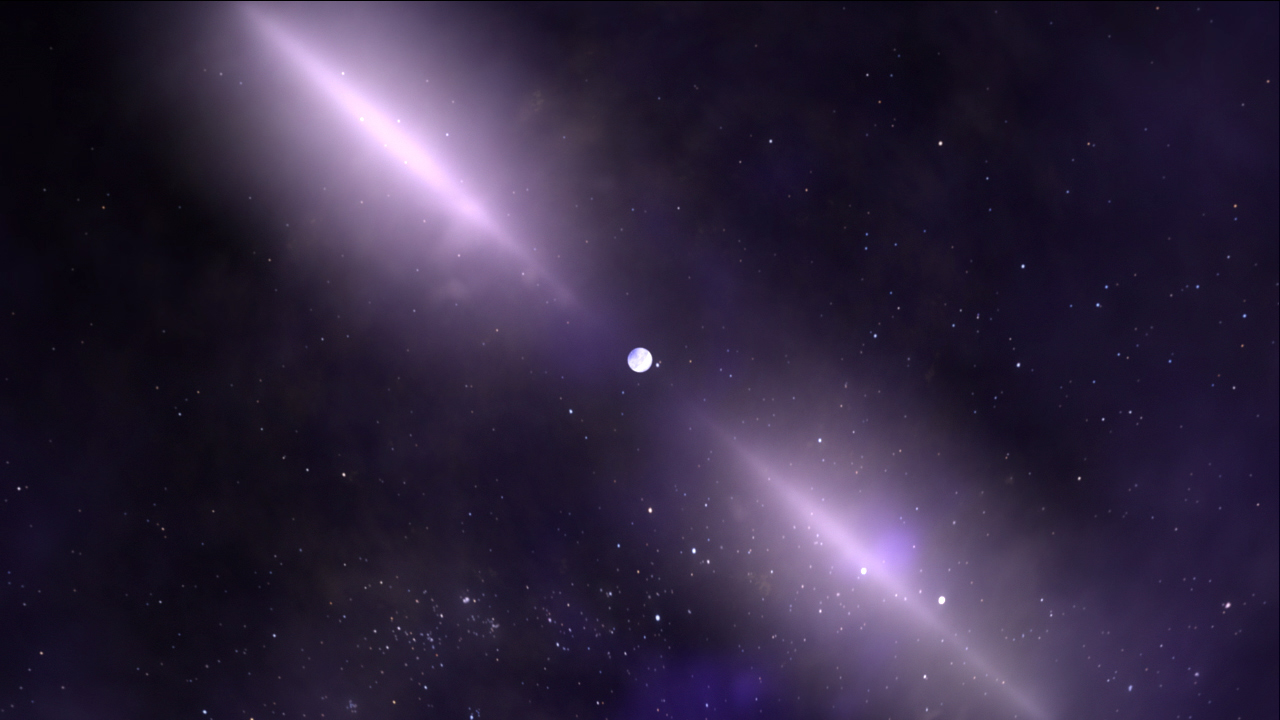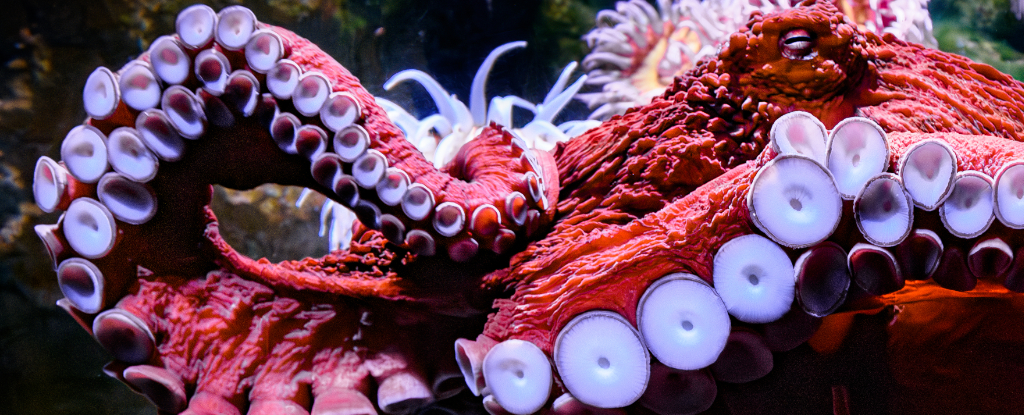Did spiders swim before they could crawl? Fossil analysis reveals shocking information - The Times of India
7/30/25 at 12:19am

Trending News: A new study suggests spiders may have ancient marine origins. Researchers analyzed a 500-million-year-old fossil, Mollisonia Symmetrica. They found it
Viewed by
You are the first to view
Antigravity from Insta360 Takes Aim at DJI with Sub-249g 8K 360-Degree Drone - CineD
7/30/25 at 12:19am

Antigravity from Insta360 challenges DJI with world's first sub-249g 8K 360-degree drone, targeting creators over experts.
Viewed by
You are the first to view
AI is taking scientific discovery from decades to minutes - Earth.com
7/30/25 at 12:19am

AI is helping scientists solve complex equations in minutes - accelerating discoveries in chemistry, climate, and medicine.
Viewed by
You are the first to view
Scientists have just discovered an ocean at the Earth's core, challenging our understanding of the universe. - evidencenetwork.ca
7/30/25 at 12:19am

Could there be a huge ocean hidden 700 km beneath our feet? If the discoveries made by teams of scientists in two different parts of ... Read more
Viewed by
You are the first to view

At the Roman settlement of A Cibdá de Armea in northwestern Spain, archaeologists uncovered evidence suggesting that ancient Romans adorned their amulets with fossils of extinct marine arthropods, like trilobites, possibly rooted in the belief that these spec…
Viewed by
You are the first to view
Memories aren't static in the brain — they 'drift' over time - Live Science
7/30/25 at 12:19am

A new mouse study of spatial memory suggests that the brain's representation of places "drifts" over time.
Viewed by
You are the first to view
A Hidden Heat Source on Uranus Just Changed What We Know About Planets - SciTechDaily
7/30/25 at 12:19am

Using decades of space data, scientists have cracked the mystery of Uranus’s hidden heat.
Viewed by
You are the first to view
Scientists hit quantum computer error rate of 0.000015% — a world record achievement that could lead to smaller and faster machines - Live Science
7/30/25 at 12:19am

The record-breaking achievement could lead to practical, utility-scale quantum computers that are both smaller and faster.
Viewed by
You are the first to view
This Star System Contains 5 Potentially Habitable Planets - WIRED
7/30/25 at 12:19am

Astronomers have discovered a new exoplanet that may be habitable 35 light-years from Earth. Named L 98-59 f, it joins four other worlds in the temperate zone of an intriguing planetary system.
Viewed by
You are the first to view
Rapidly spinning dead star's strange 'glitches' are oddly regular - Space
7/30/25 at 12:19am

Ultimately, we do not understand where glitches come from or exactly what's going on inside pulsars.
Viewed by
You are the first to view
5 science facts that come from simply watching the Moon - Big Think
7/30/25 at 12:19am

Even just by examining the Moon with the unaided eye, we can learn an incredible amount about the Moon, Earth, and more.
Viewed by
You are the first to view
Watch the Earth split in real time: First-ever video reveals 2.5-meter fault slip in seconds caused by an - The Times of India
7/30/25 at 12:19am

Science News: In March 2025, a magnitude 7.7 earthquake struck central Myanmar, marking the strongest seismic event in over a century. A nearby CCTV camera captured
Viewed by
You are the first to view

Octopuses can be fooled into thinking a fake arm is actually their own.
Viewed by
You are the first to view
Northern Lights Could Be Visible From These 8 States Sunday Night - Forbes
7/30/25 at 12:19am

The aurora borealis could appear in parts of the Upper Midwest.
Viewed by
You are the first to view
Telescopes Pop-Up on City Sidewalks to Engage Passersby in Free Astronomy Viewing Worldwide - Good News Network
7/30/25 at 12:19am

The urban astronomy movement #PopScope has set up telescopes on sidewalks that have brought 26,000 people closer to the night sky.
Viewed by
You are the first to view
Dinosaur hunters make “chilling” discovery deep in Canadian badlands - BBC Wildlife Magazine
7/25/25 at 12:51am

Palaeontologists find remarkable set of dinosaur footprints – including those of two large tyrannosaurs – at Dinosaur Provincial Park in Alberta.
Viewed by
You are the first to view
9,000-Year-Old Drawings Found Next to Dinosaur Footprints in Brazil - The Daily Galaxy
7/30/25 at 12:19am

9,000-year-old rock sketches found beside dinosaur tracks suggest early humans were aware of these prehistoric creatures.
Viewed by
You are the first to view
Scientists Warn: Tintina Fault Could Unleash Major Earthquake - SciTechDaily
7/30/25 at 12:19am

A major fault in Canada’s Yukon Territory, long thought dormant, has shown signs of recent seismic activity. A new study from the University of Victoria (UVic) has brought attention to a newly identified seismic threat in northwestern Canada’s Yukon Territory…
Viewed by
You are the first to view
Scientists Uncover Lost Human Cities Beneath the Sea: Secrets of Ancient Migration Routes Revealed - Indian Defence Review
7/30/25 at 12:19am

Scientists have uncovered submerged human cities and migration routes beneath the sea.
Viewed by
You are the first to view
Analyzing Ancient Footprints, Scientists Find Evidence Dinos Like T-Rex Did the "Moonwalk" to Attract Mates - Futurism
7/30/25 at 12:19am

Scientists have discovered that a fossil site in Colorado was once the equivalent of a popular night club, back in the Cretaceous era.
Viewed by
You are the first to view
Albert Einstein’s 1915 Letter to His Son Reveals the Key To Learning - My Modern Met
7/30/25 at 12:19am

In his letter, Einstein reveals the way to "learn the most."
Viewed by
You are the first to view

If you define “metabolism” loosely enough, these robots may have one.
Viewed by
You are the first to view
Researchers issue warning over troubling phenomenon that could revive dormant volcanoes: 'It's just like opening a Coca-Cola bottle' - Yahoo Home
7/30/25 at 12:19am

Volcanic eruptions aren't just dramatic — they can be dangerous and far-reaching.
Viewed by
You are the first to view
“We Weren’t Supposed to See This”: Webb Telescope Spots Bizarre Signal on Europa That Scientists Call “Deeply Unsettling” - Rude Baguette
7/30/25 at 12:19am

IN A NUTSHELL 🌌 SWRI scientists conducted experiments to explain unexpected hydrogen peroxide levels on Europa. 🔬 The experiments utilized a vacuum chamber to simulate Europa’s conditions, revealing the role of carbon dioxide. 🌊 Findings suggest possible s…
Viewed by
You are the first to view
This Dinosaur Probably Chirped Like a Bird - Gizmodo
7/30/25 at 12:19am

A new fossil discovery in China could push the evolutionary origins of birdsong back millions of years.
Viewed by
You are the first to view